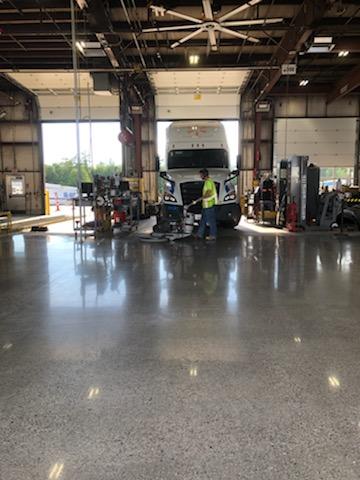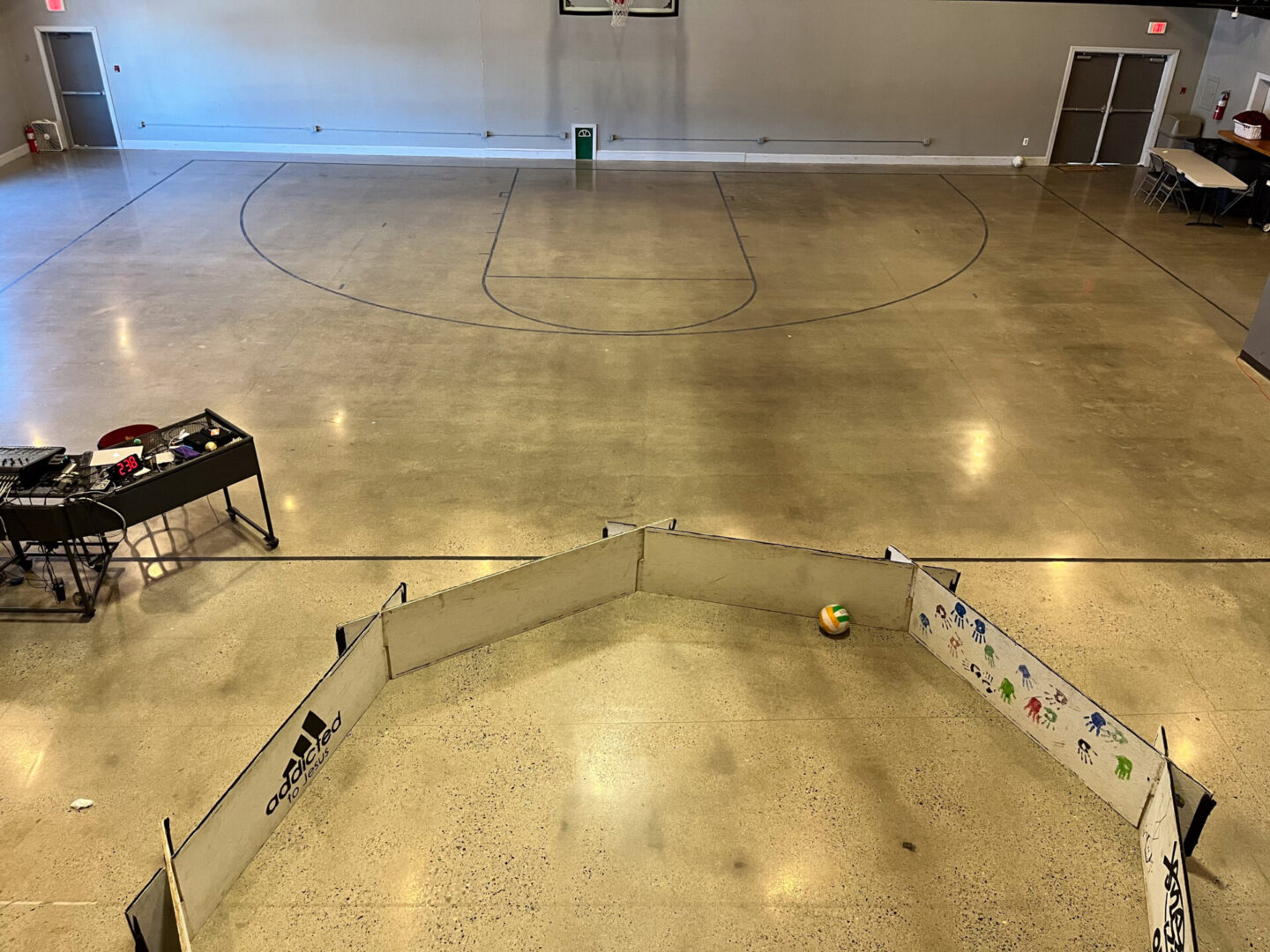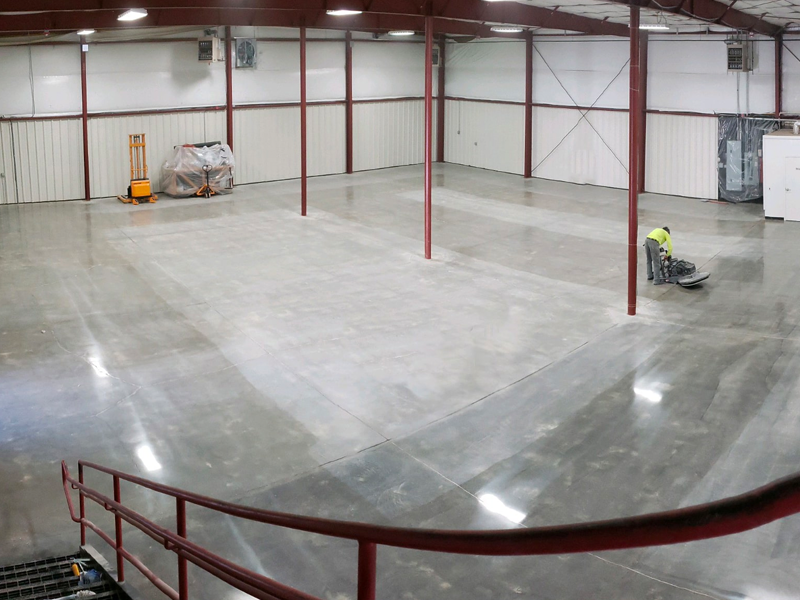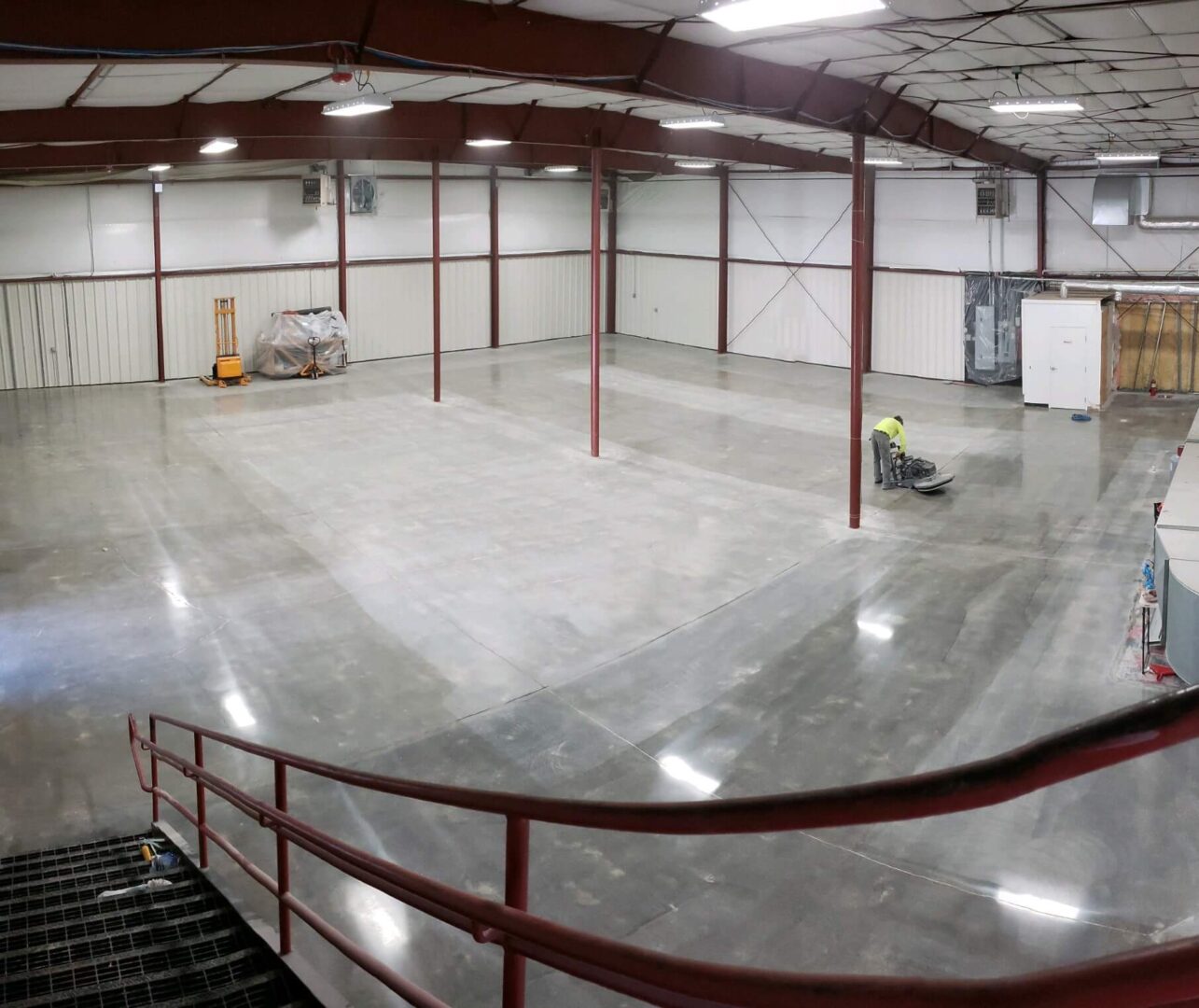Concrete primarily served as the go-to material for sub-flooring and foundations, typically hidden beneath tiles or carpeting. However, the tides have shifted, and concrete has emerged as the choice for both residential and commercial spaces because of the numerous benefits of concrete polishing. (Read More Here)
Today, there are a lot of concrete flooring options available, with polished concrete reigning supreme as a top favorite, particularly in establishments like restaurants, warehouses, and retail stores. Homeowners, too, are embracing it, drawn to its remarkable mirror-like finish. But it’s not just confined indoors; polished concrete has also gained traction as a fantastic option for those seeking to enhance their garage floors.
At first glance, it might be challenging to fathom how polished concrete can withstand the rigors of heavy vehicular traffic without losing its shine. However, the good news is that this type of concrete product possesses resilience, durability, and ease of maintenance.
The Polished Concrete Process
The intricate process of achieving polished concrete entails a series of mechanical steps, beginning with the grinding of the concrete. It is subsequently honed and polished using bonded abrasives to refine the floor surface, with the level of gloss achieved dependent on the fineness of the cuts, resulting in either a high-gloss or a satin-like finish. The realm of polished concrete offers a vast array of colors and patterns, granting you limitless design possibilities.
For your garage floors, the process may vary depending on the existing condition, making it imperative to enlist the services of a professional team to ensure the desired outcome. Typically, the procedure unfolds as follows:
- Surface Preparation: The work area is isolated, with surrounding areas carefully protected. Any pre-existing floor coatings are removed to create a clean canvas. For the safeguarding of your belongings during the renovation, consider services provided by a mobile storage company like Spacebox, which can store your possessions remotely or on-site.
- Chemical Densifier Application: The concrete floors may undergo treatment with a chemical densifier, designed to fill gaps and pores within the material. This process reinforces the surface by penetrating and hardening the open spaces. While not always required, this step is vital unless the existing floor is free from damage and the cracks and joints are sealed.
- Progressive Grinding: The grinding process begins, akin to sanding wood. A polishing machine fitted with finer diamond grits is employed to bring forth the desired smoothness and luster for your garage floor. The choice of grit size determines the final aggregate size and smoothness of the surface.
- Divot Patching: The diamond grinding process continues, with gradually increasing grit levels. A hardener and densifier are applied to further fortify the surface.
- Honing and Polishing: Resin discs are utilized in the honing process, commencing with grit levels ranging from 200 to 800. If desired, concrete staining can be introduced at this juncture.
- Final Polishing: The true polishing phase is reached with the use of 1,500 or 3,000 grit diamond pads, imparting a high-gloss sheen to the surface.
- Protective Treatments: Oil and water repellents are applied, and a stain guard may be used to enhance stain resistance. The latter is particularly recommended for garage applications, forming a protective, ultra-thin coating that prevents the concrete from absorbing stains and chemicals.
Before commencing any of the aforementioned steps, as the property owner, you’ll have the opportunity to make choices regarding the gloss and aggregate levels of the floor. Your contractor will guide you through these options.
Why Choose Polished Concrete for Your Garage Floor
Opting for a polished concrete floor system can utterly transform your garage, endowing it with uniqueness, durability, and aesthetic appeal. The porous concrete surface you once had is transformed into a solid, non-porous one, impervious to the intrusion of oil, water, and various contaminants. Here are more reasons why polished concrete should be your top pick for garage flooring:
- Eco-Friendly: Polished concrete is an environmentally conscious choice, classified as a sustainable material that minimizes environmental impact. Utilizing the existing concrete substrate eliminates the need for additional materials and reduces energy consumption during installation.
- Contemporary Aesthetic: While retaining the classic appeal of concrete, polished concrete also introduces a modern, minimalist design that complements contemporary architectural styles. Its industrial charm is a versatile fit for various spaces, including your garage.
- Exceptional Durability: Despite its pristine appearance, polished concrete boasts an exceptionally long lifespan, surpassing other flooring options such as hardwood, which isn’t suited for garages. Unlike many alternatives, it resists scratching, chipping, and denting, maintaining its top condition.
- Low Maintenance: Polished concrete requires minimal maintenance, with a basic regimen that includes daily dust mopping to prevent the accumulation of dirt and debris, as well as periodic wet mopping with clean water and a pH-balanced cleaner. Unlike some floors, there’s no need for waxing, which can dull the finish.
In addition to these benefits, polished concrete is also an excellent choice for allergy sufferers. Its surface acts as a barrier against allergens like dust, bacteria, and mold, repels moisture, and is less porous compared to other floors. For long-term preservation, be sure to update the sealer annually to maintain its water and contaminant-repelling properties.
For those who desire customization, polished concrete provides a fantastic option. It can be dyed or stained, breaking free from the monotonous grey concrete appearance. Staining can be combined with cured concrete for a variegated or antiquated effect. Moreover, exposed aggregate is a superb choice, offering a range of variants, from coarse to medium-grained particulate material, resulting in a unique and visually striking floor. The availability of various aggregate materials, including crushed stone, sand, and gravel, adds a touch of individuality to your flooring.





